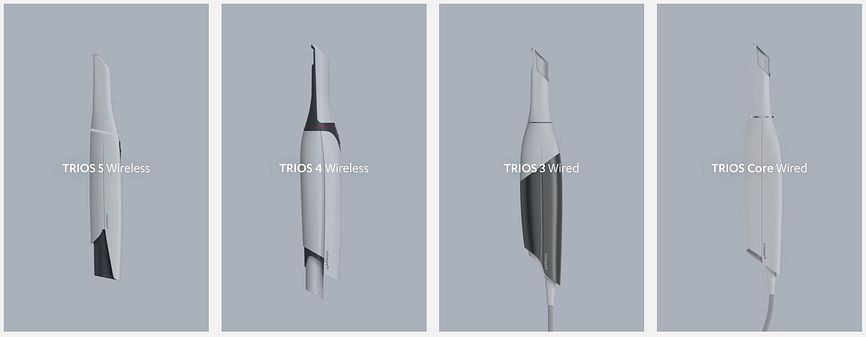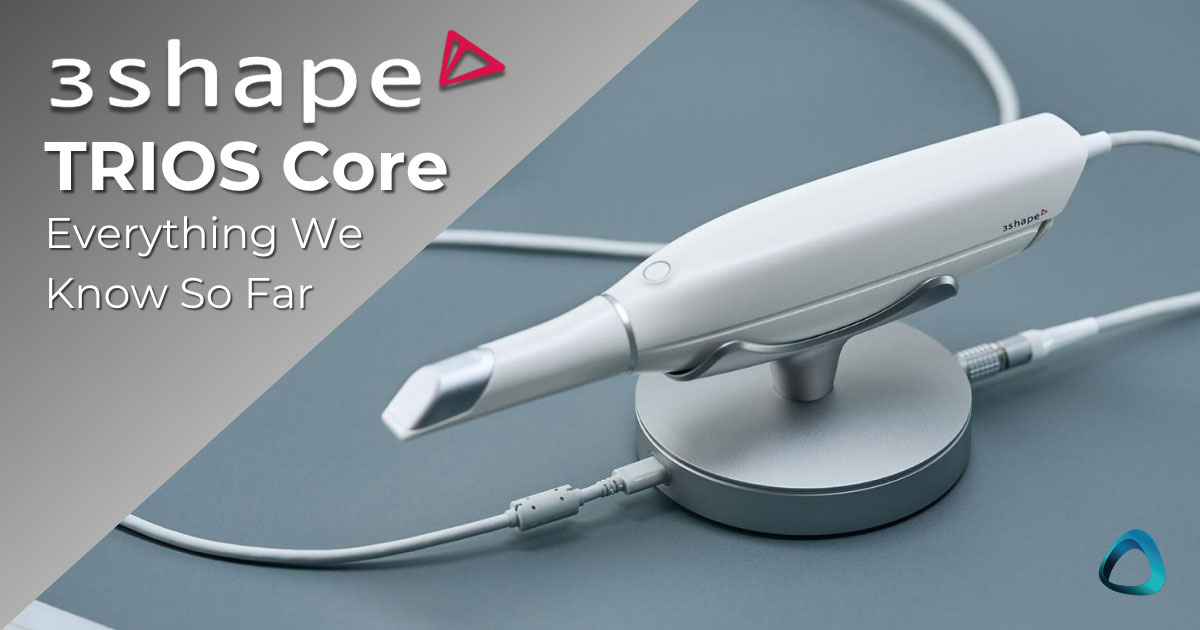One of the biggest names in digital dentistry just released a new scanner, so let’s go over everything about 3Shape’s new TRIOS CORE intraoral scanner.
Check out our video below, or keep reading for all the in-depth info.
3Shape Announces the TRIOS Core at Discover 2024
In case you missed it, 3Shape just held their Discover online event, where they announced four exciting releases.
If you want to check out the full recap blog, just click here - we have covered all the releases.
Their newest scanner is the TRIOS Core, a scanner that seems to be built on the TRIOS 3 hardware but with a few differences.

What the company has done is take the TRIOS 3 and concentrated solely on all the essential functions for scanning.
This has allowed them to provide the most economical TRIOS scanner that still retains much of what we love about the TRIOS 3.
This is quite a big move by 3Shape and, frankly, may shake up the market. 3Shape scanners have some of the best brand recognition in the entire industry, they are scanners that are known to work very well and are considered premium. Even the almost 7 years old TRIOS 3 is well-regarded by clinicians globally.
Well now the company is offering a solution for those who may have been priced out by TRIOS 5, 4 and even 3.
What’s the Price of the TRIOS Core?
As far as intraoral scanners go, this is an economical option - especially for a TRIOS scanner.
The TRIOS Core costs 12,400 Euro or USD, depending on where you’re buying it from.
We have never seen a TRIOS scanner this affordable. Especially on launch day.
What’s Included with the TRIOS Core?
It is very similar to the TRIOS 3, almost identical actually, with the same five scanner tips, calibration units, TRIOS 3 scanner pod (updated), license dongle etc.
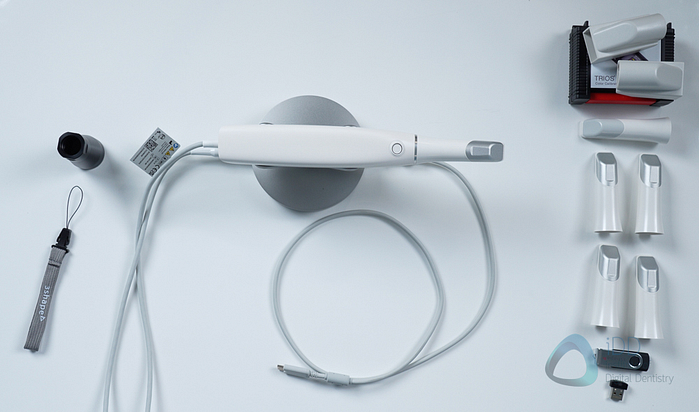
Everything that comes with the TRIOS CORE
Interestingly, the lincense dongle will soon no longer be relevant thanks to everything going to the cloud with the new 3Shape Unite platform.
So, overall, this is more like a TRIOS 3 than a brand new IP. It is the same weight as the TRIOS 3 too at 340 grams. So what are some of the differences between this and the TRIOS 3? Even the newly updated one?
The difference between TRIOS Core and other TRIOS Scanners?
Well, one of the biggest differences is the Invisalign connection. TRIOS Core does not have the Invisalign connection unlike the TRIOS 3 in some regions. So if that matters to you, definitely get a TRIOS 3 (if you work outside of USA, China or Japan - there TRIOS 3 is not accepted either).
The other main differences between TRIOS CORE and TRIOS 3/4 and 5 are:
- No software applications (smile design, ortho simulator etc)
- No practice management software integration
- No invisalign connection
- No option to use this with TRIOS MOVE cart - TRIOS Core is a laptop scanner.
Otherwise its basically the same as TRIOS 3. As mentioned, it's 340 grams. It is a wired scanner - this wont be released as a wireless scanner.
Some aesthetic improvements - there is a metal ring which the company seems to be running with, also seen in the updated TRIOS 3.
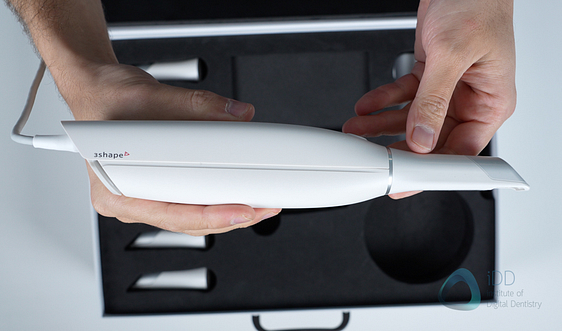
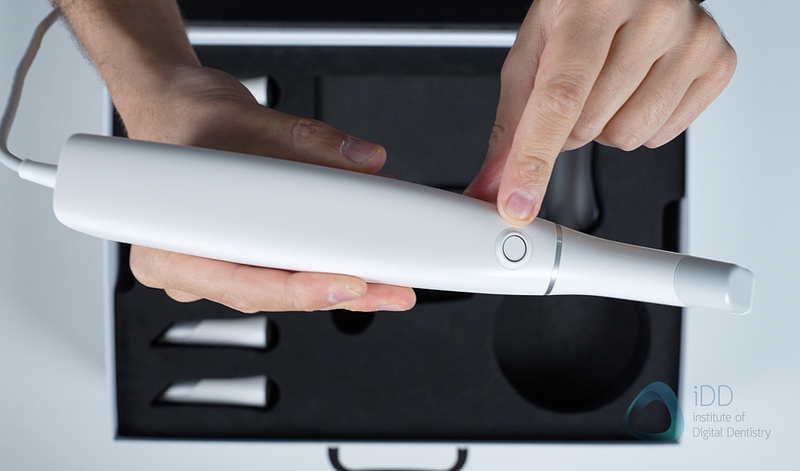
The scanning button is different now - in the previous generation TRIOS 3, it was a silicone piece, now it’s this elevated button. The vents look very similar to TRIOS 3 and it is a USB C scanner.
There is no power cable required, the TRIOS Core connects to this newly designed Pod and this connects to your laptop by USB C.
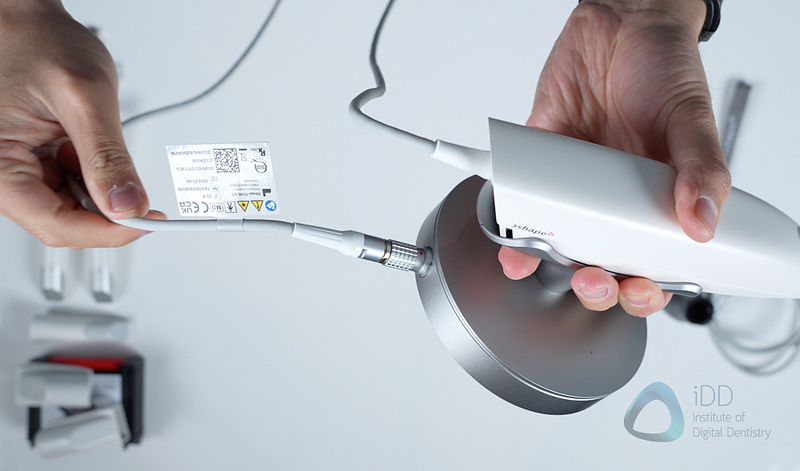
TRIOS Core is a totally open scanner allowing export of STL and PLY, just like all other TRIOS scanners.
There has been some confusion regarding this because of the messaging the company is using 'send-to-lab workflows'. For this reason some clinicians are assuming that it is a locked scanner - just for sending to the lab. This is not true. It is open.
I believe the company is going with this messaging to meet the market where it is - most clinicians, the vast majority actually, just want to scan and send to the lab.
Lastly - it can also be used to send to DS Core.
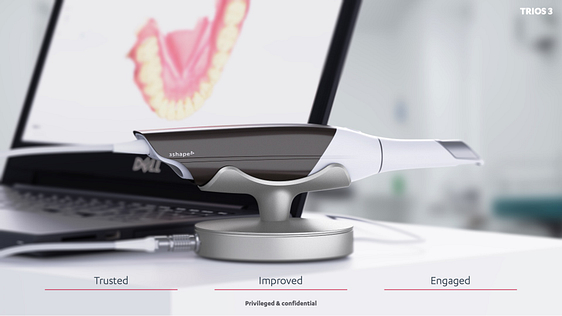
Updated TRIOS 3
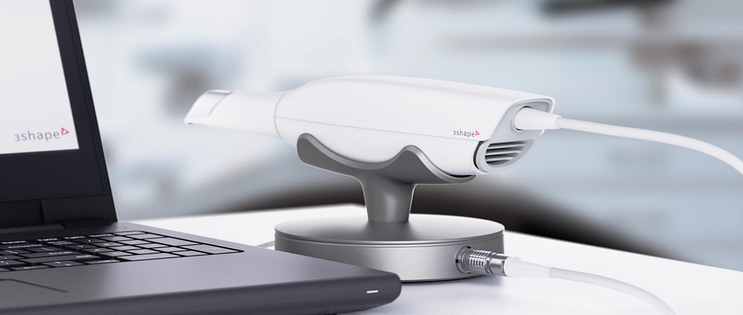
TRIOS Core
What’s the TRIOS Core Like to Scan with?
Having tried this scanner, I can say it feels exactly like the TRIOS 3.
Everything you liked about that scanner is pretty much the same here, hardware wise. It is proven technology for everything from single units, bridges, ortho, implants, full arch, edentulous scanning etc. And frankly, the TRIOS 3 was always a fast scanner. My personal record of a full arch scan was around 15 seconds on a real patient, not a model.
So I guess don’t fix something that is not broken. The company has realised the market is heated and honestly it seems they are listening to customers. People want a cheaper scanner. So they are providing one.
The one difference is that the company says the TRIOS Core only takes 1400 images per minute compared to TRIOS 3 and 4 (1875) and TRIOS 5 (2400). I personally could not really tell a major difference when using it.
It seems like a way the company needed to differentiate the lower cost TRIOS Core to the others. Very similar to how Medit released the i600 which was similar to i700 and capped it at 30 FPS. A software throttle.
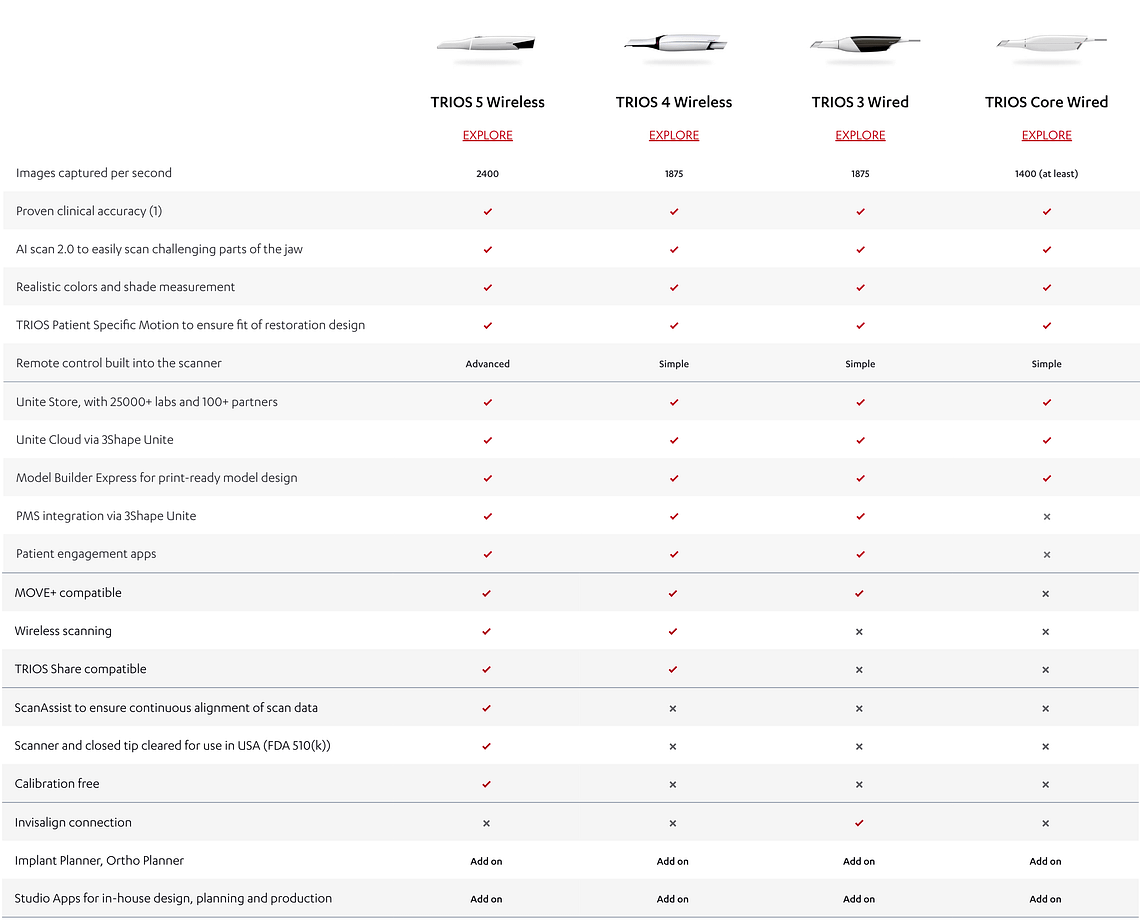
What Workflows Should You Use the TRIOS Core for?
It is important to note that the TRIOS CORE is being marketed around send-to-lab workflows.
This is for clinicians that don’t want to manufacture in-house and rather send want an excellent and economic scan and send option. This does not mean it is NOT an open scanner however. You can still export files easily.
Also, through 3Shape Unite you can connect to over 25,000 labs that are on there, lab connections are easy and via 3Shape software allow for direct sending of scans to the lab.
This is something the company has been developing for some time and pushing hard.
Note you do not have access to the 3Shape TRIOS software apps seen below with the TRIOS Core.
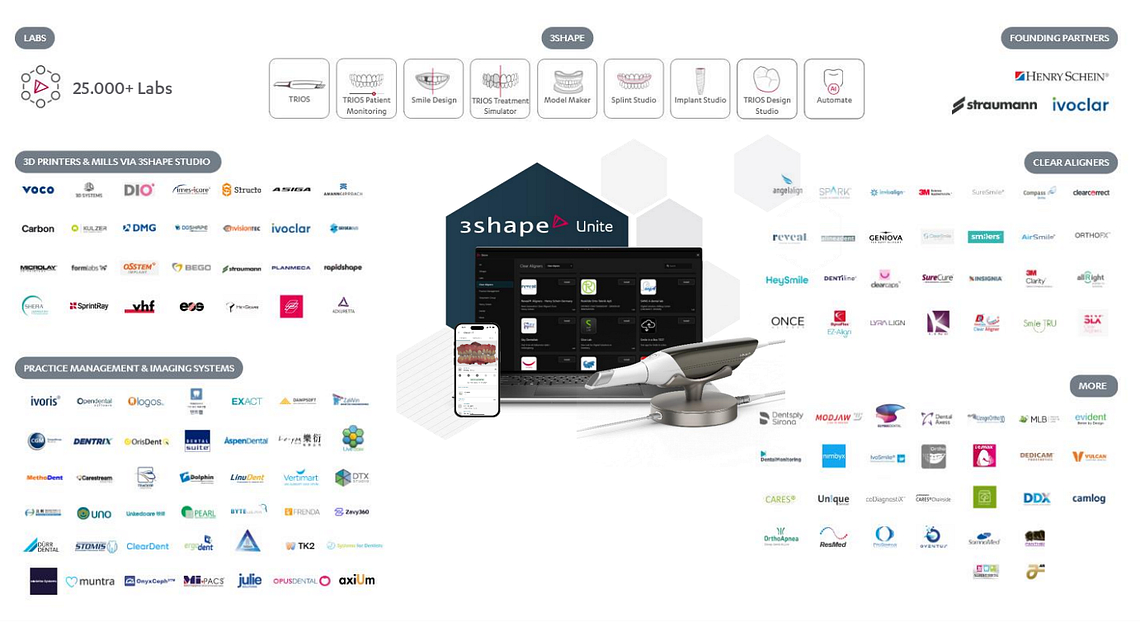
The TRIOS CORE also has shade matching capabilities and with the new 3Shape Unite Cloud Platform, you can now manage and access your cases in the cloud from any location, on any device with 3Shape, Unite Cloud app and web. This includes adding photos from your smartphone, adding comments, and communicating with the lab - pretty cool.
Conclusion
So, with the TRIOS Core we have the lowest cost TRIOS scanner ever released. It is basically a wired TRIOS 3 with some quality of life improvements at half the cost of a TRIOS 5. The cost of TRIOS Core is 12,400 USD.
The mainy differences between Core and other TRIOS scanners is that it does not have software applications, no PMS integration, no MOVE compatability and no Invisalign connection (like TRIOS 3 in some regions.
So now we have a TRIOS scanner for potentially every dental professional.
- The premium and high end TRIOS 5 which is wireless.
- The TRIOS 4, also wireless, for those who want a more affordable version of the TRIOS 5.
- The TRIOS 3, for those who want an Invsalign connection outside of North America, China and Japan.
- And now the TRIOS Core, for those who just want a low cost TRIOS scanner.
Really cool move in my opinion from the company. Exciting times for the digital dentistry market that seems to be getting busier than ever.
I would love to hear your thoughts on this new release. Will this be your go to TRIOS scanner?
